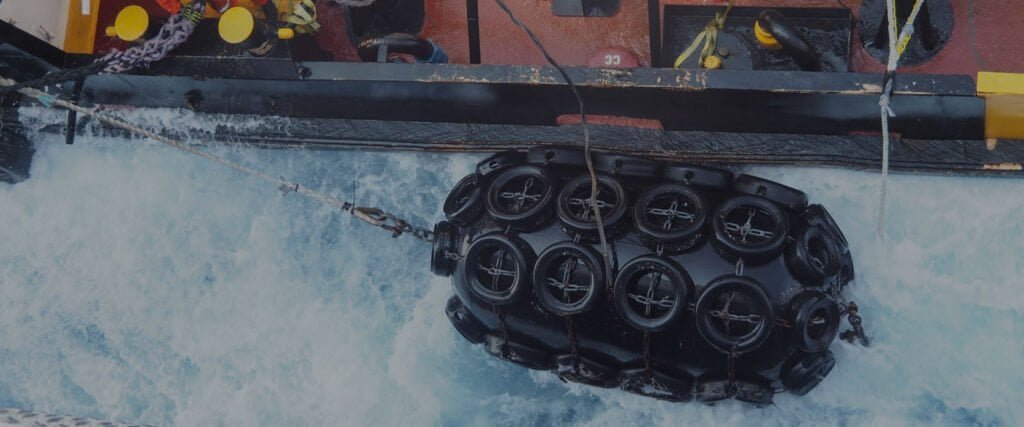What Is an Element Rubber Fender?
07/07/2025How to Lift a Sunken Vessel Using Marine Salvage Airbags
07/07/2025Performance of Pneumatic Fenders in Extreme Cold Environments
Why is this issue necessary and urgent?
As global trade extends into Arctic and Antarctic routes, marine operations increasingly face severe cold environments. Picture a cargo vessel docking off Greenland at -40 °C, or an oil rig transfer in Siberia’s -50 °C winds—without reliable fenders, collisions can damage hulls, and berths, and even cost lives. That’s why, when Nanhai developed a new rubber compound that lets pneumatic fenders perform down to –50 °C, it’s not just an upgrade—it’s a breakthrough for maritime safety and business continuity in freezing zones.
How Pneumatic Fenders Stay Reliable at –50 °C
NANHAI’s improved rubber compound keeps the outer and inner layers flexible and airtight even in extreme cold, avoiding brittleness and maintaining high energy absorption, crucial when docking in icy waters.

Why Pneumatic Fenders Outperform Other Marine Fenders
- Superior cold-weather resilience: Unlike foam or solid rubber, pneumatic fenders retain elasticity at very low temperatures.
- High energy absorption, low hull pressure: These fenders cushion impact effectively, even at -50 °C.
- ISO‑17357-compliant design: Layers of outer rubber, tyre-cord reinforcement, and inner liner ensure durability and strength.
Choosing the Right Specifications
- Materials: A combination of natural rubber with a custom low‑temperature compound offers peak performance.
- Structure: Dual-pressure options (50 kPa/80 kPa) suit different vessel sizes and berthing needs.
- Accessories: Tyre‑chain nets add abrasion resistance, while safety valves prevent overinflation.
Why This Matters Now
Given the surge in Arctic shipping and offshore operations, subzero resilience isn’t a luxury—it’s essential. Without it, ports risk costly delays, equipment damage, or dangerous hull impacts. NANHAI’s pneumatic rubber fenders, tested for –50 °C, guarantee performance under pressure. Their patented compound helps ensure smooth, safe docking even in the harshest environments.
People Also Ask
1. How do pneumatic fenders perform in cold weather?
They maintain flexibility and energy absorption even at –50 °C, thanks to improved rubber formulations.
2. What materials are used in pneumatic fender construction?
Outer protective rubber, tyre‑cord reinforcement, and an inner airtight liner—engineered to resist cold-induced stiffness.
3. Are Yokohama-style pneumatic fenders effective in Arctic conditions?
Absolutely. Yokohama-type fenders are praised for consistent performance even at extremely low temperatures.
4. What maintenance do pneumatic fenders need in extreme cold?
Periodic pressure checks, visual inspections for cracks, and ensuring storage in sheltered conditions—essential for longevity.
5. Can pneumatic fenders be adjusted for different ship types?
Yes—selectable diameters (0.5–4.5 m), lengths (1–12 m), and internal pressure options (50/80 kPa) make them ideal for varied vessels.
Final Take
If your operations require ice-proof marine protection, NANHAI’s pneumatic fenders—with their advanced rubber compound tested down to –50 °C—should be atop your list. Combining the best of Yokohama fenders, robust marine-grade materials, and precise ship‑fender performance, they ensure your fleet stays protected, even in the most extreme cold.
Continue reading to explore specifications, installation tips, and case studies from NANHAI’s Arctic trials—because in subzero environments, only the toughest fenders will do.
